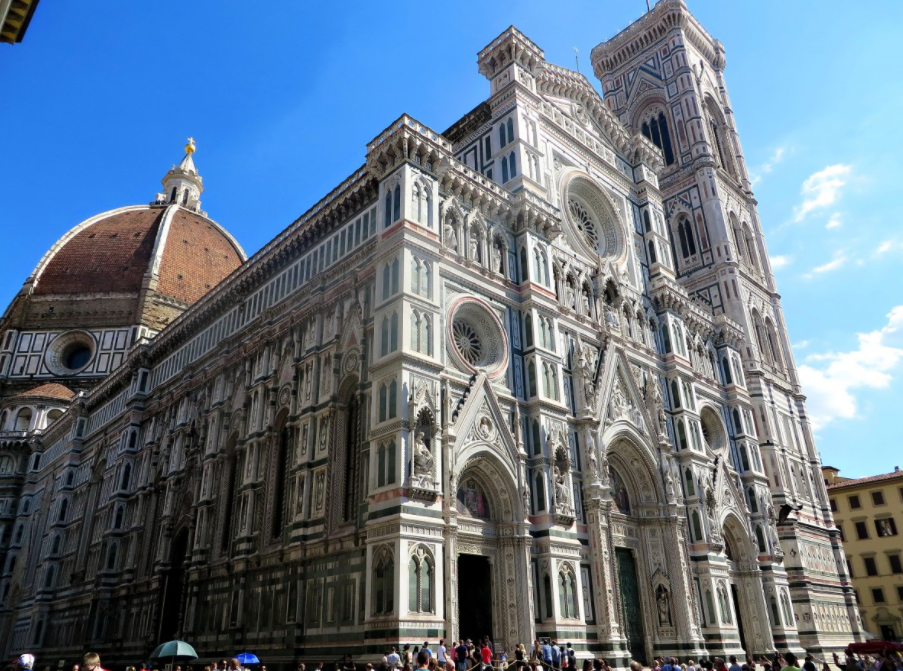This post was adapted from a thread originally posted by @Flantoshi on Twitter
At the risk of sounding like a grandpa yelling about ‘kids these days,’ I think the culture that defines our era values instant results over meaningful ones. There are ready-made meals, fast-track degrees, overnight successes and immediate gratification.
We’re awash with convenience to the point where we’ve mostly forgotten that good things usually take time to build. Our patience has been eroded and little has been done to replace the hole in our collective wisdom. I’m far from an exception – the days where I could read a single book in one sitting are somewhat behind me, though I do wish to regain that ability in the future.
Be that as it may, the illusion of how easy everything is to attain has poisoned us. Even our underlying financial system demands immediate Return on Investment, or the whole venture is considered a failure.
We demand immediate results, consequences be damned.
It is with this backdrop that you can look at the Cathedrals of old, and marvel at the magnificent feats of engineering and social responsibility that they involved. The average of these grand buildings took hundreds of years to complete, if not the better part of a millennium.
Would we even be capable of building something of the sort if we set our minds to it? Technologically, yes; socially, unlikely I would say.
However, the nature of how we express value is changing. Does it not make sense that if we are to mainly live digitally, that our monuments would themselves become digital?
I would posit, perhaps controversially, that Cardano has the potential to become a wonder of the world – no less impressive than the Pyramids of Giza, Angkor Wat, Notre Dame or St Paul’s. In this article, we will be exploring how Cardano is exactly like cathedrals of old, and what this means going forward.
The Interminable Cathedral
In August 2021, Anatoly Yakovenko, the co-founder of Solana, began making fun of the competition to his blockchain, and had this to say on Cardano:
“It’s popular to shit on Cardano. The approach they are taking is extremely esoteric. Huge stick up their ass about correctness. They’ll never ship, they’re building a cathedral.”
Notable people in the Cardano community, like @cardano_whale, took offence at this. After all, it’s another slight in a long list of mischaracterizations and plain lies that get lobbed at the blockchain on a regular basis, and it does get tiring.
So the overall reaction, though unsurprising, is fairly understandable. But in Mexico, we have a saying “entre broma y broma, la verdad se asoma” ~ “between joke and joke, the truth will peek in.”
What if Yakovenko’s jab accidentally has a kernel of truth in it, though not in the way that he intended?
After all, Cardano wants to be much more than just a blockchain – it seeks to underpin the transfer of value in all its forms, from money to intellectual property, real estate, and even people’s identities.
It does so via communal effort, where no person is in absolute control of the operation. And despite already having thousands of people helping develop it, as well as using it to exchange value, it’s far from complete.
We’re so far away from finishing that Charles Hoskinson, the founder of Cardano, has gone on record in saying that the project is likely to take the rest of his life. Sure, there will come a time when he is no longer the primary person at the helm, but his life and Cardano’s fate will be entwined until he dies.
While the foundations will be set in the coming years, the grander form of the ambitions might take decades to come to fruition.
I even dare say it’s not unlike the grand cathedrals of old in its scope. Indeed, some aspects of the project have yet to fully take shape. Some aspects of Cardano are still being studied, or the technology underpinning said elements are yet to be developed.
It’s not unlike when the Cathedral in Florence was being built, which owing to its ambitious design, the original dome simply would’ve not been able to support the proposed weight. It took the bold work of a goldsmith, an amateur architect and virtuoso Filippo Brunelleschi to come up with an ingenious design to solve the issue.
In other words, construction began in September 1296 and it took until 1423, a full 127 years to take its ultimate shape. It bears mentioning that the dome relied on techniques and ideas that hadn’t even been conceived of when they broke ground when the original cathedral was designed.
But that’s part of the magic of cathedrals, they are built as an iterative process, as a bond between the past and the future that is yet to come. Artists and engineers hundreds of years apart, who could not ever possibly meet, somehow found a means of working together and creating beauty against all odds.
That is the hallmark of civilization – trusting the wisdom of those who came before, while doing the best that one can to improve the odds of the next generation fixing the problems your contemporaries have yet to solve.
The Decentralized Cathedral
According to a Victorian legend, cathedrals didn’t have architects. Instead, the masons and carpenters would show up each day, and guided by the will of God, they would work in the best means by which they could bring beauty into the world – no central planner, just pure unbound human spirit driven by divine intervention.
Of course, this is just fanciful nonsense that was repeated because it sounded quaint. But, ironically, something of the sort is actually happening. Perhaps it isn’t the hand of God, but it’s Adam Smith’s invisible hand.
Presently, 200 projects are building on Cardano, 3140+ stakepools are processing transactions and thousands of content creators are all trying to create things that indirectly strengthen the network.
Nobody guides us, but through our collective action, we help shape and build this grand vision. So while the broad skeleton is defined, at least in these initial stages, by the likes of IOHK, we’re populating the ecosystem with our unique idiosyncrasies and quirks.
We’re already seeing new applications that were not envisioned by the early architects of Cardano – like mass token distributions, initial stakepool offerings, and unique art applications.
All in all, Cardano is evolving like a living creature before our very eyes. Yes, it’s still in its larvae stages, and it requires protection by its guardians, but we are already starting to see very favourable comparisons with any of the competing blockchains.
It’s like the cathedrals of old – only until they were finished was their ultimate shape sealed. For now, it remains in flux and it is brimming with potential.
Yet, although most of its utility lies in the distant future, it’s still usable, and indeed desirable, today. Cathedrals, despite taking generations to build, are not meant to be empty husks, only to be consecrated until they’re finished.
No! Far before they’re completed, people will go there and live their lives in the little nooks and crannies that might already be available.
This is not to say that it will always be comfortable. After all, it’s still a building site with all the noise and obstructions that this entails. But the sacrifice is worth it, as people understand the grander vision that is at work and, with use, every stone that is placed is imbued with the essence of all who participated there.
That is the hallmark of a culture that deeply cares for its past, and what is yet to come.
The Point of Civilization
It is easy to forget in our individualised era that ‘No man is an island entire of itself’ – we are bound to each other’s destinies in ways that we can scarcely comprehend.
So when we see something of the size and scope of Cardano, our gut reaction is to dismiss it. We are so cynical about the world around it, that we scorn sincerity.
Cardano was (and is) primarily an investment for me. I did not come here for flowery language and a sense of purpose. Though I’ve come to respect the different faiths, if they do not meddle with my own existence and respect human dignity, I am an avowed atheist.
I’ve concluded that I need to create my own meaning in a universe that seems far grander and more mysterious than we might give it credit for, in our petty lives on this floating mudball.
But this does not mean I can’t occasionally be swept away by the decentralized cathedral. It is a project almost unique in its conception – a cliché so old that it has been forgotten, and in its rediscovery seems novel.
Cardano harkens back to an era where we had patience and a deep sense of duty to our legacy and the generations yet to come. An era not ruled by quarterly profits but glorifying that which was greater than a single person.
I feel we have lost it to our detriment.
The Ancient Greeks had a saying “A society grows great when old men plant trees in whose shade they shall never sit.” This is what Cardano aspires to be, and it is the hallmark of a civilized society.
Before it is finished, the hands of millions of people, maybe billions, will have aided in its development. While perhaps their names will be forgotten in time, their deeds and actions won’t be, as they will be permanently logged for all to see for centuries to come.
Conclusion
We have moved from a world ruled by iron and stone, to one of algorithms and data. It makes sense that our monuments would shift to this reality as time passed.
I would imagine that my view is fringe and obtuse, though I am a sucker for quixotic quests.
Cardano is the type of project that is rarely attempted anymore. It’s intergenerational and at a scale that one can scarcely imagine.
There is great optimism in me that if Cardano manages to accomplish even a fraction of what it set out to do, it stands to be an important marker in the historical record – an immutable, decentralized and thorough chain linking the past, present and future.
On this great chain, we shall record every creative expression and exchange of value that occurs in society. The lives of billions of people will one day be carved on this monument, with all the sorrows and victories that come with being a person.
It shall be a record of what it means to be human, and I can’t wait for it!
If you’re in the crypto or in the traditional finance industry looking for someone to ghostwrite content for you, please do not hesitate to message me. I’m a full-time ghostwriter.
Join the community over at @flantoshi on Twitter.
And if you would like to support this project and help me pay rent, I’ll pass on the tip hat and you can send ADA to:
addr1qxfgs44d763uuw4hy6qatx383v9mmrrm6qazay6eren9sp5r2usruecwv33lp2t2nqp4ss6hrc9ac8yd2klxnsfnxz2qw3su4s
Thank you for your support!










